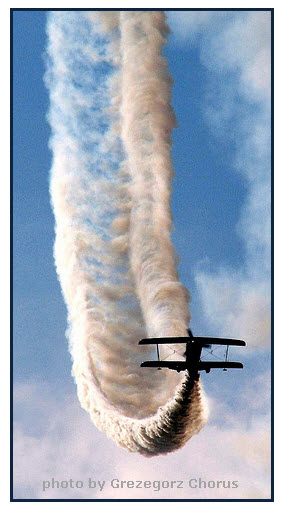There are many types of clouds in the sky, some are even man-made, such as the clouds left by airplanes as they fly by. The name of these man-made clouds is contrail (short for “condensation trail”).
Contrails are vaporized water that condenses. Condensation is a process by which water vapor is cooled resulting in the change from a gas (vapor) to a liquid.
Discover Condensation for Yourself
1. On a cold day, go outside and exhale. It looks like smoke or better yet, a little cloud forms in front of you. So what is happening? Your breath is warmer than the air and it contains water vapor. When the water vapor in your breath is cooled by the air, the water vapor condenses–changes to droplets of water which forms a visible cloud.
2. You can also exhale onto a mirror and water vapor in your warm breath will condense on the cool surface.
3. Have you ever notice how water forms on the outside of a cold soda can or a glass with an icy liquid inside? Some say the can or glass is “sweating.” But, the water on the cool surfaces comes from water vapor in the air. If the humidity (a measure of water in air) is low, there will be little condensation, but with a high humidity the amount of condensed water is great.
Contrails are also made by the condensation of water. In the photo, the exhaust from the engine has water vapor. The air temperature is colder than the exhaust. For air planes at high altitudes, the air temperature is cold enough for the water vapor to change to ice crystals. This change is called sublimation.
Temperatures are colder at higher altitudes and instead of condensing the water vapor sublimes (a direct change from a gas to a solid or vise versa). The ice crystals form what appears to be a white line behind the high flying plane. If there is a lot of water in the air around the plane, the icy contrail is large and lasts a long time. But, with only a small amount of water in the air, the contrail id small and quickly disappears.
Big Book of Science Experiments
A book of fun informative experiments about astronomy, biology, chemistry, earth science, and physics.

